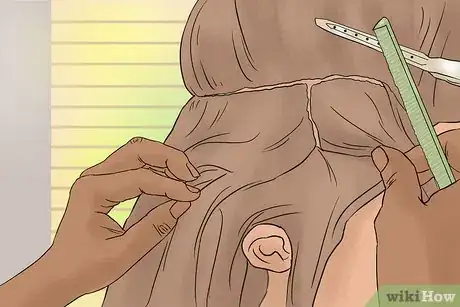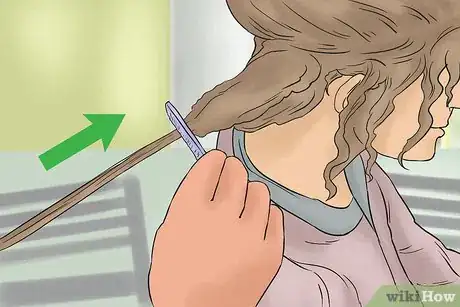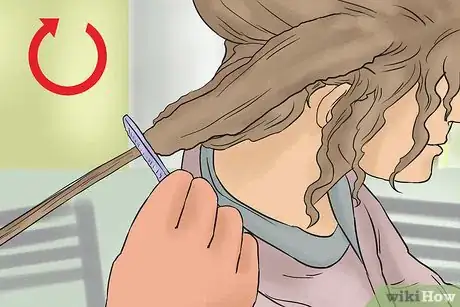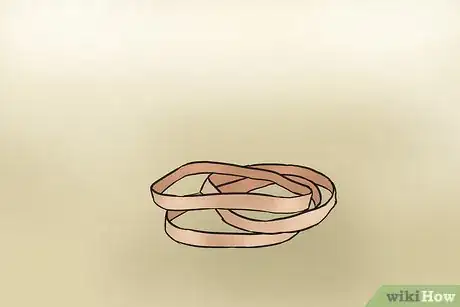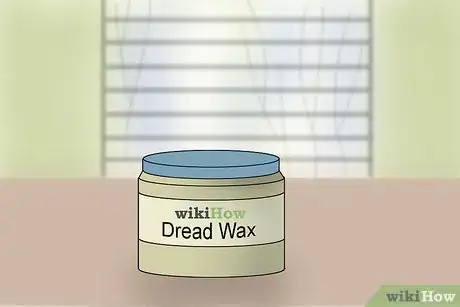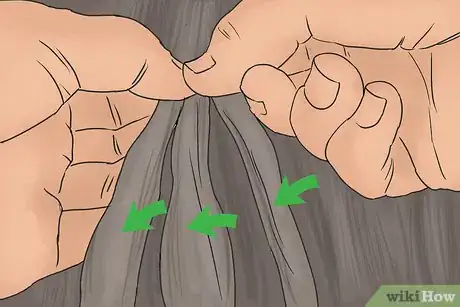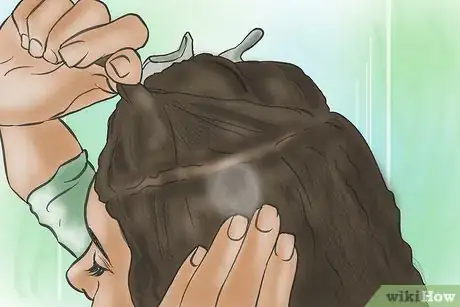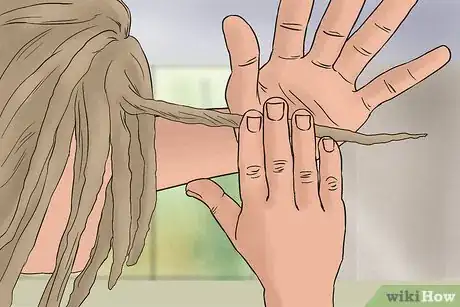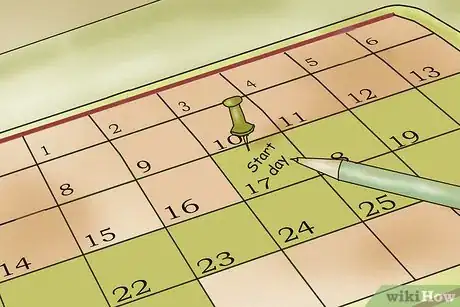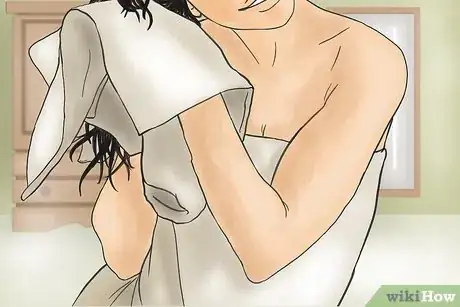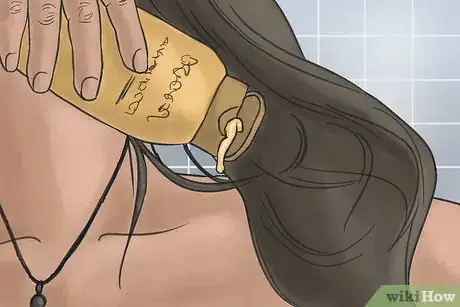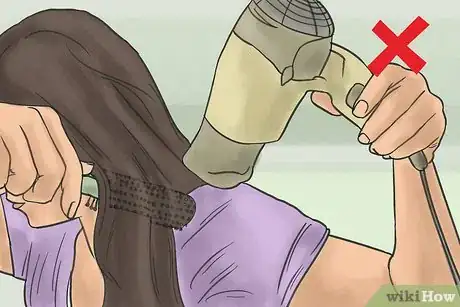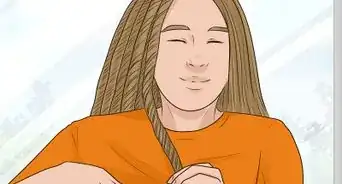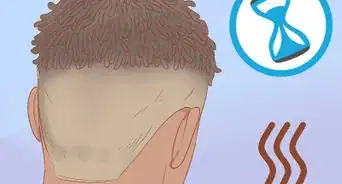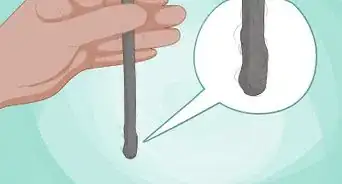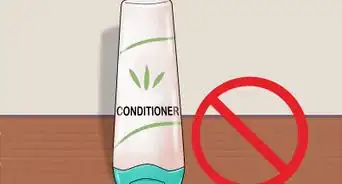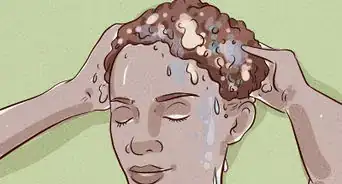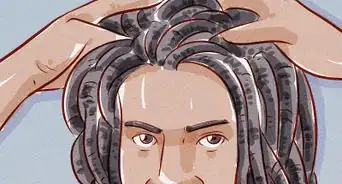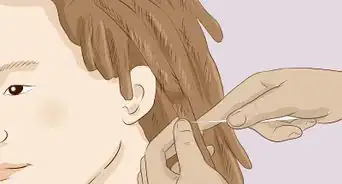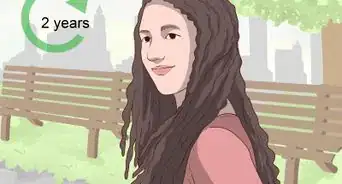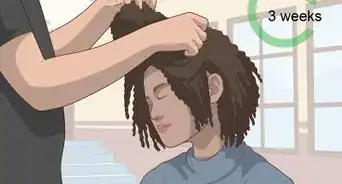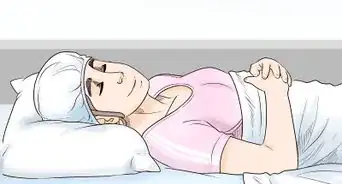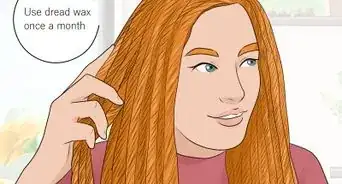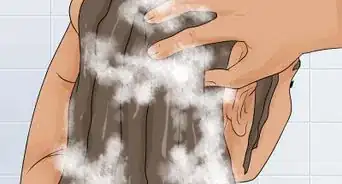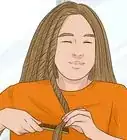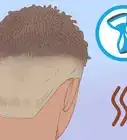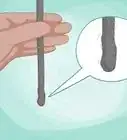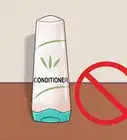This article was co-authored by Ashley Adams. Ashley Adams is a Licensed Cosmetologist and Hair Stylist in Illinois. She completed her Cosmetology education at John Amico School of Hair Design in 2016.
This article has been viewed 43,426 times.
Dreadlocks take advance planning, preparation, and frequent maintenance in order to create and keep healthy. If you’re thinking about starting dreads, you’ll first need to consider your hair type and the method that you’d prefer to use. Dreadlocks were designed for, and will work best in, black (African) hair, but white or Asian individuals commonly use the hairstyle as well.
Steps
Backcombing to Create Dreads
-
1Section your hair into small squares. You’ll need a friend to help with this method: they should use their hands or a comb to part your hair into multiple small squares. It’s up to you how many squares your friend makes. Each square will become a single dreadlock, and smaller squares make thinner dreads. Generally, 1- or 2-inch (2.5 or 5 cm) squares are preferable, though it depends on what you want. Determine what size you would like beforehand.[1]
- Backcombing works to create dreads on hair that is already at least 3 inches (7.6 cm) long.
- If your hair is less than three inches, plan to grow your hair before starting dreads, or use another method to create the hairstyle.
-
2Backcomb the hair in each square if your hair is naturally straight. The individual dreading your hair should firmly grasp the segment of hair contained within each square. Using a dread comb, firmly comb the hair back towards your head, starting with the hair about 1 inch (2.5 cm) from your scalp. As the hair begins to build up towards the roots, your friend can move farther from your scalp until they backcomb the entire strand of hair.[2]
- You can buy a dread comb online, at a department store, or through a local hair salon or beauty supply shop.
Advertisement -
3Don't backcomb if your hair is naturally curly. African hair typically doesn't need to be backcombed since this usually doesn't look as good. Start off your dreads by sectioning the hair in a square, applying product and then using a dread comb to twist the entire section of hair in a spiraling motion, from the roots to the ends.
-
4Repeat for each square. This is a time-consuming process: you’ll need to wait while your friend backcombs the section of hair in each square on your head (there could be as many as 30). As they backcomb all of your hair, they can also roll the hair of each dread back and forth between their fingers. This will help pack the hair in each dread as tightly as possible.[3]
- Be aware that you’ll lose length when you create dreads by backcombing. Plan to lose at least 1/3 or 1/2 of your hair length.
- If you start dreads in 6 inches (15 cm) hair, the finished dreads may only be 3 inches (7.6 cm) long.[4]
-
5Fasten each dread with two rubber bands. Once each dreadlock has been completely backcombed, secure the end of the dread with a small rubber band. You or your friend can secure another small rubber band around the root of each dread (as close to your scalp as possible) in order to prevent the base of the dread from loosening or unraveling.[5]
- African hair has a texture which makes rubber bands unnecessary. The curliness of your hair should be enough to keep the dread from unraveling.
- Any variety of rubber band will work: check an office supply store and purchase the smallest, thinnest set of rubber bands available.
-
6Apply a dread wax. After each dread has been fully backcombed and has rubber bands at the tip and base, it’s time to wax the dreads. Have your friend liberally apply a dread wax to each of your new locks. This will help restrain loose ends on each dread, and will help the hair form proper dreadlocks quickly. For safety reasons, it’s best if the wax you use does not contain petroleum.[6]
- You’ll probably be able to purchase dread wax at the same location you bought the dread comb. Look in online retailers—including online hair salons—drug stores, beauty parlors, or large department stores.
- Even after having been waxed, it will take dreads 3–4 months to reach maturity.[7]
Starting Dreads with Strand Twists
-
1Divide each square into two or three strands. As with the backcombing method, you’ll first need to part your hair into multiple small square sections. Once the squares are made, divide the hair from each square into two sections (you can also make three sections, although that requires more complex twisting).[8] You can separate the sections using small hair clips or rubber bands.
- Twists are an effective way to begin dreadlocks in longer or highly-textured hair. You only need to start with at least 4 inches (10 cm) of hair for this to work.[9]
- While twists are an effective way to start dreads in black hair, they do not work well in white hair since they will unravel easily.[10]
-
2Coat each strand with dread cream or wax. This thick gel-like substance will help the large strands of hair cohere, and will encourage the dreadlocks to form more quickly. Before you start twisting the strands, make sure that each is fully covered with a thin layer of dread cream.[11] Additional cream provides no added benefit, so you don’t need to slather each strand.
- You can purchase dread cream or wax at a local hair or beauty salon, online through large retailers, or at a local drug store or department store.
-
3Twist each strand counterclockwise, and then twist pairs together clockwise. At this point you’re ready to twist the strands. Begin by taking each strand of hair: twist it three or four turns counterclockwise. Once you’ve twisted a set of two strands (from the same square of hair), you can twist the strands together. Pass one strand clockwise over the other two or three times. This will form a large natural hair spiral.[12]
- Once the two strands of hair have been twisted together, secure the lock together (at both the tip and the base) with a hair clip or rubber band.
- Due to the different directions that the strands have been twisted, the sections of hair will begin to lock together and form dreadlocks.
-
4Give the strands time to mature into dreadlocks. The strand twist method of forming dreadlocks takes time: the strands can take anywhere from 6 months to 2 years to blend together and give the appearance of a single, solid dreadlock.[13] During this time you should wash the dreadlocks no more than once or twice a week.
- As the locks mature, it’s important to keep them tightly rolled.
- If dreadlocks begin to unravel at the ends, re-roll the dread (using a comb or your hands) so that the strands stay tightly woven.
- As new hair grows, you should avoid re-doing the strand twists, as this will lengthen the time needed for dreadlocks to form.
- You can dread new hair by twisting the hair at the roots to meet with the nearest dreadlock.
Letting Dreadlocks Form Naturally
-
1Grow your hair until it’s about 10 inches (25.5 cm) long. This method of forming dreadlocks does not work with shorter hair. Your hair will need to have substantial length in order to form natural dreadlocks. This process also takes time: it can take at least three years for naturally made dreadlocks to form.[14]
- Natural dreadlocks will only form for individuals with natural afro-textured hair.
-
2Wash your hair. In order for your hair to form natural dreadlocks, it should first be clean. While various rumors may imply that hair needs to be unwashed—or even deliberately soiled—in order for dreads to form, this is untrue. Your hair makes its own oils, which are necessary for healthy hair, but too much of these oils will prevent hair from forming dreadlocks.[15]
- Once you start naturally growing dreadlocks, you should take a two-week break from washing your hair, to avoid breaking the locks apart.
- After this two-week period, begin regularly washing your hair again, once or twice a week.
-
3Let your hair tangle. This is the central step to forming natural dreadlocks: you’ll need to resist the temptation to brush or comb your hair, and let your hair naturally bind itself together. It’s difficult to predict the growth form of natural dreadlocks; unlike other methods, you will not be able to guide or control the shape of your dreadlocks.[16]
- It’s possible to make minor adjustments to naturally-formed dreads, however.
- For example, if your hair develops a thin dreadlock, you can combine this into a larger dread using rubber bands and dread cream.[17]
Expert Q&A
-
QuestionHow long does it take to make a dread?
 Laura MartinLaura Martin is a Licensed Cosmetologist in Georgia. She has been a hair stylist since 2007 and a cosmetology teacher since 2013.
Laura MartinLaura Martin is a Licensed Cosmetologist in Georgia. She has been a hair stylist since 2007 and a cosmetology teacher since 2013.
Licensed Cosmetologist Depending on hair texture, dexterity, and skill a single dread takes anywhere from 1-5 minutes to produce.
Depending on hair texture, dexterity, and skill a single dread takes anywhere from 1-5 minutes to produce. -
QuestionCan a person with straight hair get dreadlocks?
 Laura MartinLaura Martin is a Licensed Cosmetologist in Georgia. She has been a hair stylist since 2007 and a cosmetology teacher since 2013.
Laura MartinLaura Martin is a Licensed Cosmetologist in Georgia. She has been a hair stylist since 2007 and a cosmetology teacher since 2013.
Licensed Cosmetologist Yes, but they are more likely to slip out in the early stages. Getting a perm before dreading the hair can help create more stable locks.
Yes, but they are more likely to slip out in the early stages. Getting a perm before dreading the hair can help create more stable locks. -
QuestionHow do I combine 9 cm long dreadlocks?
 Community AnswerThe first thing you want to do is get a rat tail comb, any conditioner that you prefer and a spray bottle with water in it. Spray some water on the lock, then put conditioner and start from the bottom of the lock and use the end of the comb and start combing them out.
Community AnswerThe first thing you want to do is get a rat tail comb, any conditioner that you prefer and a spray bottle with water in it. Spray some water on the lock, then put conditioner and start from the bottom of the lock and use the end of the comb and start combing them out.
References
- ↑ http://www.dreadlocks.com/methods.html
- ↑ http://www.dreadlocks.com/methods.html
- ↑ http://www.dreadlocks.com/methods.html
- ↑ http://www.knottyboy.com/lore/idx.php/9/0/Starting-Dreadlocks.html
- ↑ http://www.dreadlocks.com/methods.html
- ↑ http://www.dreadlocks.com/methods.html
- ↑ http://www.knottyboy.com/lore/idx.php/9/0/Starting-Dreadlocks.html
- ↑ https://www.knattydread.com/pages/2-3-strand-twist-dreads
- ↑ http://curlynugrowth.com/7-methods-to-start-locs-drawbacks-what-to-expect/
- ↑ http://www.knottyboy.com/lore/idx.php/9/0/Starting-Dreadlocks.html
- ↑ https://www.knattydread.com/pages/2-3-strand-twist-dreads
- ↑ https://www.knattydread.com/pages/2-3-strand-twist-dreads
- ↑ http://curlynugrowth.com/7-methods-to-start-locs-drawbacks-what-to-expect/
- ↑ http://www.dreadlocks.com/methods.html
- ↑ http://www.knottyboy.com/lore/idx.php/9/0/Starting-Dreadlocks.html
- ↑ http://curlynugrowth.com/7-methods-to-start-locs-drawbacks-what-to-expect/
- ↑ http://www.dreadlocks.com/methods.html
- ↑ http://www.knottyboy.com/lore/idx.php/9/0/Starting-Dreadlocks.html
About This Article
To start dreads, start by sectioning your hair into small squares, with 1 square for each dreadlock you want. Then, take a section of your hair, and comb from the end of it toward your scalp. If you have naturally curly hair, you may not need to backcomb it. Next, repeat the process for each square section, rolling the sections of hair between your fingers as you go. Finally, fasten the ends of the dreadlocks with rubber bands, and apply a dread wax to each strand. For more advice from our Cosmetology co-author, like how to start dreads using strand twists, scroll down!
